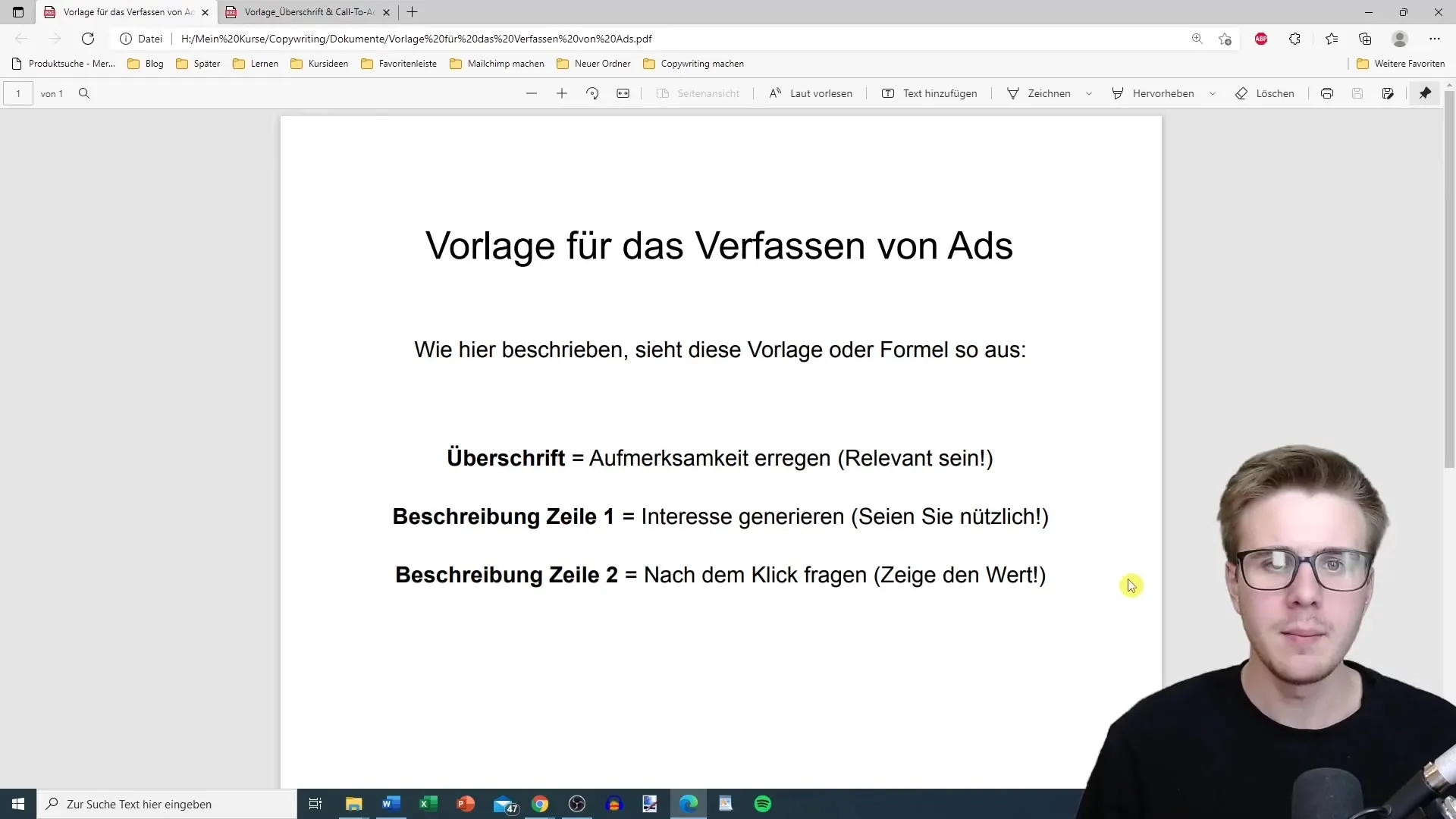You want to create successful advertisements that appeal to potential customers? The following guide will explain how you can do this using a simple and effective template. The structure is based on the key elements of an advertisement: headline, description lines, and a clear call-to-action. Let's dive straight into the details!
Key Insights
- The headline is designed to attract attention.
- Description line 1 generates interest in the product or service.
- Description line 2 contains the call-to-action that invites clicks without directly urging a purchase.
Step-by-Step Guide to Creating Ads
1. Headline: Making the First Impression
The headline is the first thing potential customers see. It should make readers curious and not ignore the ad. Use concise, eye-catching phrases that describe the benefit or the main promise of your service.

If you're looking for an example, take the sentence "Never make mistakes with Google ads again." This statement attracts the reader and makes them consider if they have issues with their own ads. That puts you one step ahead!
2. Description Line 1: Sparking Interest
After the headline has caught attention, it's time for the first description line. Here, the goal is to deepen the interest. Describe what the product or service specifically offers and why the reader should continue reading.
A successful sentence could be: "With our free tool, you can easily check your marketingads." This specific statement demonstrates that your product offers a clear advantage and stimulates the desire to learn more.
3. Description Line 2: Inserting the Call-to-Action
In the second description line, you place the call-to-action (CTA). Here, you should not directly urge the reader to make a purchase but encourage them to click on the link. Use phrases like "Click now for more information" or "Discover the seven best tips to optimize your ads."
By focusing on the click, you open the door to your landing page, where you can present the product more comprehensively. This is a crucial step because a direct sales pitch in the advertisement may be less effective.
4. Importance of Relevance
Ensure that your ad remains relevant at all times. If you use relevant images or graphics, support them with your headline. The visual component significantly helps in attracting attention.
The image should complement the text and not appear disconnected. A good example would be an image showing the benefit of your product – such as a satisfied person using your tool.
5. The Big Picture Overview
The structure of an ad is simple but effective: headline, followed by description line 1, and finally the call-to-action. Ensure that each element is clearly and attractively formulated.
Remember that in this limited space, you must clearly convey your message. This reduces the risk of readers bouncing off before they have absorbed the entire message.
Summary
In this guide, you have learned how to write effective advertisements using a simple template. The individual components – headline, description lines, and call-to-action – are designed to captivate potential customers and make them want to learn more about your product.
Frequently Asked Questions
How do I write a good headline?A good headline attracts attention and promises a clear benefit.
What should be in the first description line?The first line should generate interest in the product and explain its benefits.
How do I phrase an effective call-to-action?The call-to-action should invite readers to get more information without immediately urging a purchase.
What are common mistakes in ads?A common mistake is to directly urge a purchase instead of first prompting the reader to click.
How important is image selection for my ads?Image selection is crucial as it influences the perception of your message and should spark interest.


